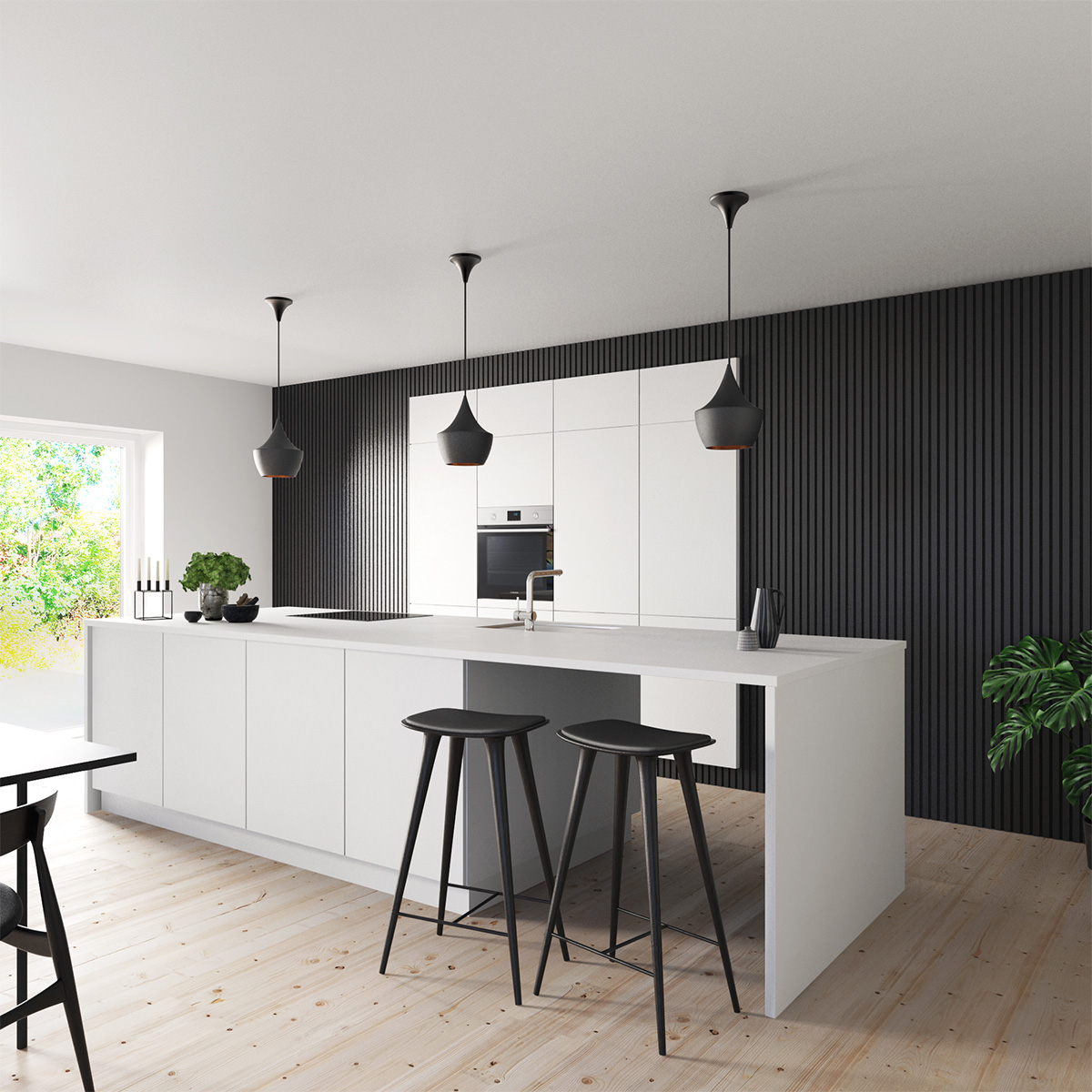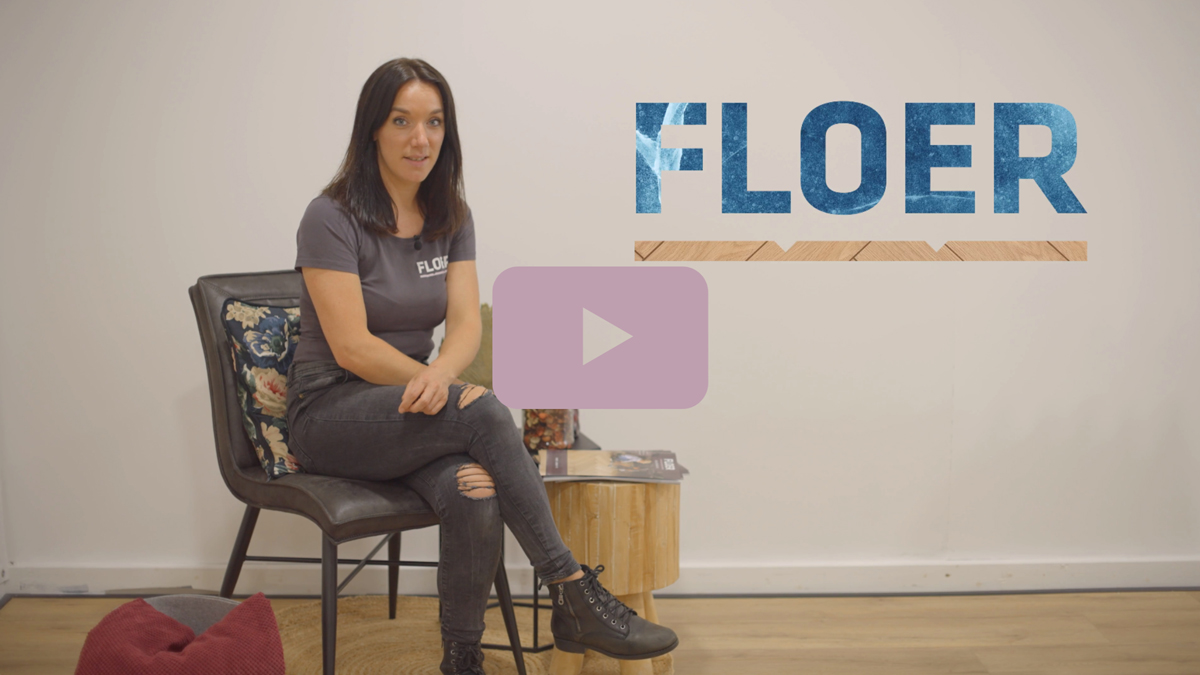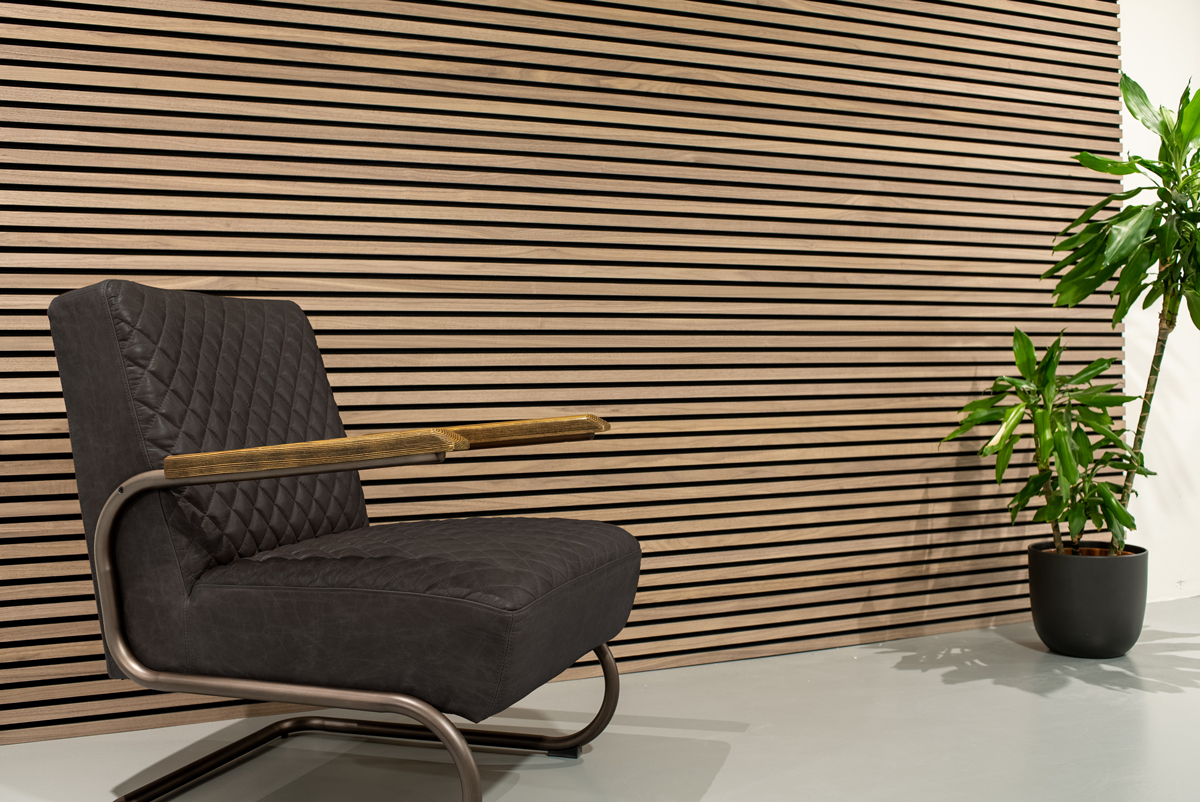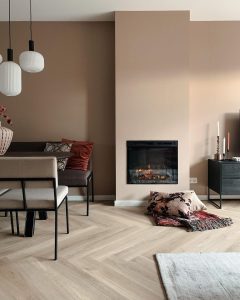
Is your living room in need of a makeover with some colour, but are you overwhelmed by the countless colour combinations available? While there is a lot of inspiration online for adding colour to your interior, finding the perfect balance of colours can be tricky. You don’t want your interior to be too busy, but you also don’t want it to be too boring. That’s where the 60-30-10 rule comes in – it provides the perfect colour ratio for your interior design!
What is the 60-30-10 rule?
When you think of ratios, you typically think of percentages. The 60-30-10 rule, which refers to the distribution of colours within an interior, is no exception. This guideline suggests that an interior is visually balanced when colours are distributed in a ratio of 60%, 30%, and 10%. For example, the interior opposite consists of 60% shades of sand, 30% black, and 10% warm red, with some white accents here and there.
By following the 60-30-10 rule, Floer’s customer was able to create a beautiful interior that complemented her Whalebone Vinyl floor.
Primary, secondary, and accent colours
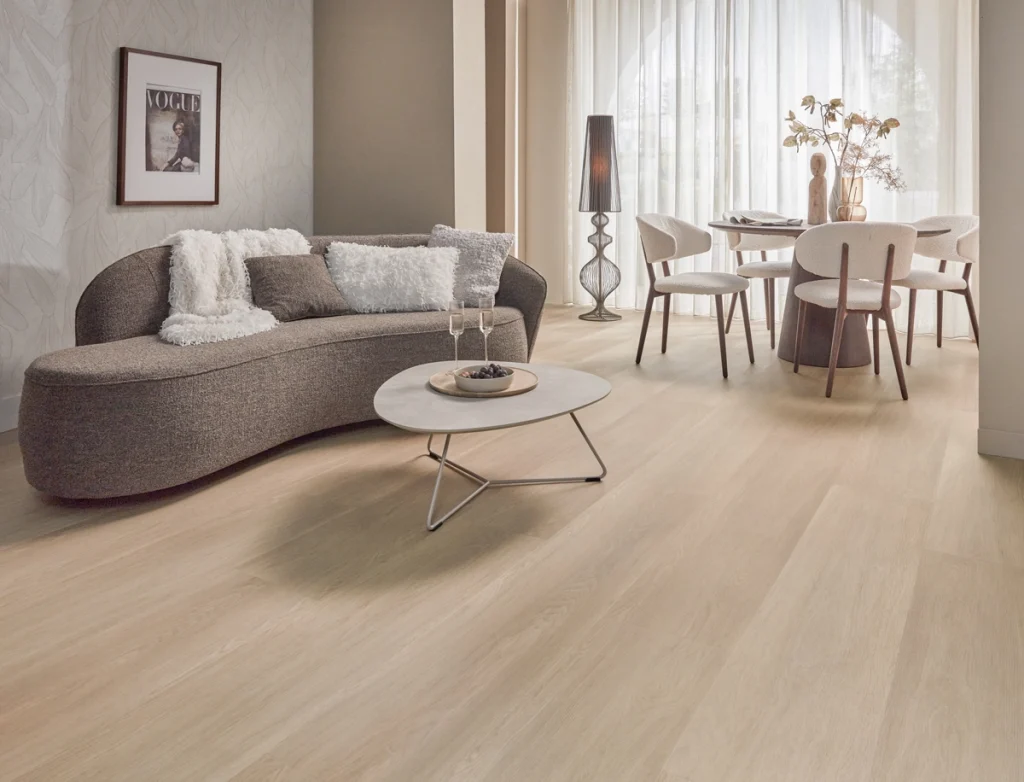
To apply the 60-30-10 ratio in your interior, you must first understand which colours are considered primary, secondary, and accent. The primary colour (which makes up 60% of the colour scheme) forms the basis of the room and is usually applied to large pieces of furniture such as the sofa or a wardrobe, as well as to large sections of the walls. The floor also has a primary colour, but we won’t go into detail about that here. The secondary colour (30% of the colours) is mostly used for upholstery and/or curtains. This secondary colour adds excitement and a new dimension to your interior, preventing it from appearing dull. Finally, the accent colour makes up the last 10% of the ratio and adds pops of colour to your interior. It is used in accessories such as cushions, decorations, and art.
Take a look at the example on the right… Do you know which colours are the primary, secondary, and accent colours?
You’ll find the answer at the bottom of this blog!
Optical effect using the 60-30-10 rule
The 60-30-10 rule is not only useful in achieving a balanced colour ratio within your interior but it can also be utilised to make the space seem larger optically. Consider a home shaped like a shoebox. By painting the inside of this shoebox in different colours, you can achieve this optical effect:
- Do you want to visually elevate your space? Consider painting the sides of the room (the walls that face each other) a dark colour, and giving the ceiling and laminate flooring a light colour.
- If you want to create the illusion of a lower ceiling, do the opposite: paint the walls a light colour and the ceiling a dark colour. This technique can also be used to make a room appear longer or wider.
- If you want to make a shoebox appear longer lengthwise, paint the longest wall with a light accent colour. And if you want to make it appear wider, paint the back with the chosen dark colour!
Floor and the 60-30-10 ratio
When applying the 60-30-10 rule to the design of your interior, it is important to consider the choice of flooring. The floor is one of the largest surfaces in the house and therefore forms the basis of the room. This base can have a significant impact on the overall look of your interior!
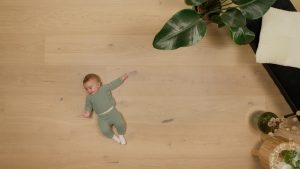
If you use the 60-30-10 ratio in your home and are in the market for a new floor, it’s important to select a floor colour that fits within the overall colour scheme of your home. Since the floor is one of the largest surfaces in the house, it falls into the primary colour shade, so it can exude neutrality to match both the secondary and accent colours. If you prefer to make a statement in your home, consider selecting a contrasting floor colour that quickly attracts attention!
In addition to colour, the texture of the floor can greatly influence the look of your interior. The Hybrid Wood collection is a prime example of this. The collection features both subtle and rustic structures. Rustic floors have more knots and wood designs, making them well-suited for rural and rustic interiors. Meanwhile, the subtle designs of these floors are similar to 1-bis parquet floors, featuring few knots and mostly the same colour within each plank.
Balance your interior with the 60-30-10 rule
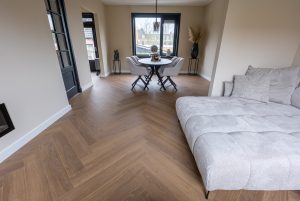
The 60-30-10 rule does not mean limiting yourself to subdued colours. On the contrary, it offers an opportunity to create bold yet balanced interiors. When using bright and bold colours, it is important to follow the proportions suggested by the rule. By carefully selecting and distributing the colours, you can make a statement in your home without disrupting the harmony of the space.
Answer: A light base sets the tone for this interior, with sand and white as the primary colours. These light colours are featured on the walls, larger cabinets, and Country House Vinyl flooring. The secondary colours are black and teal, which appear on the back wall and in the pendant lights above the dining table. Black also appears on the chair legs, lamps, and in the kitchen. To create contrast with the cool blue, warm tones in brown and cognac appear as accents on the chairs and tabletop, as per the client’s request.

